
17 Nov Heritage Newsletter- November 16, 2024
Contents
- 1 IN CASE SOUTH DAKOTA NEEDS MORE MONUMENT HERITAGE
- 2 THE NFL HAS MR IRRELEVANT, WHY NOT THE PRESIDENCY?
- 3 THE YELLOW ROSE OF TEXAS IS FROM WHERE?
- 4 WHEN A MAP FINALLY CALLS OUT ABOUT YOUR HERITAGE AFTER 30 YEARS
- 5 THE DAR HONORS THE HERITAGE OF REVOLUTIONARY WAR VETERANS. MORE ARE BEING HONORED THROUGH THE USE OF DNA, AND WE ADDED A STORY ABOUT ELEANOR AND MARIAN
- 6 BAD ORB STALAG IX
- 7
- 8 2.7 BILLION CIGARETTES
- 9 MILLION DOLLAR HAIR OIL BRINGS IN A MILLION DOLLARS
- 10 SHOT TO DEATH BY A FUTURE PRESIDENT
- 11 WHAT ABOUT YOUR DESCENDANTS KNOWING ABOUT THEIR HERITAGE?
 IN CASE SOUTH DAKOTA NEEDS MORE MONUMENT HERITAGE
IN CASE SOUTH DAKOTA NEEDS MORE MONUMENT HERITAGE
I wrote an article in 2023 called Dejavu at the Ballot Box . Dejavu election that showed the number of times we had the same choice for president on the same ballot. Of course, with President Biden dropping out, that did not happen.
We did, however, for the second time, have a president elected to a non-sequential second term. Of course, we have seen many mentions of Trump doing a Grover Cleveland. Think of Grover in his grave, wondering why it took so long for him to become a verb.
By the way, Grover Cleveland was the president pictured at the top of our last edition. He had a beard before he was president but not during his presidency. Grover Cleveland with a beard
How many times did someone besides Cleveland and Trump try to do a Cleveland?
After being elected president in 1836, Martin Van Buren lost to William Henry Harrison in 1840. He then ran again in 1848 as the Free Soil candidate and came in third to the winner, Zachary Taylor, and his opponent, Lewis Cass. He did get the slightly morbid satisfaction of seeing both of the people who beat him die early on in their terms. Heritage.
After being elected president in 1868 and 1872, Ulysses Grant, when considering his financial prospects in 1880, unsuccessfully sought the Republican nomination for president.
After succeeding to the presidency in 1901 and winning the 1904 election, Teddy Roosevelt ran against his handpicked successor, William Howard Taft, in 1912 as a Progressive candidate, splitting the vote and ensuring the election of Woodrow Wilson.
No one other than Cleveland and Trump has secured the nomination of a major political party for a non-sequential term. Fortunately (for them), they both prevailed in winning the nomination and the presidency.
Of course, there’s always the next election, in which Carter would be (104) and Biden (84). They are the only living candidates who could legally take a shot at the third double-dip.
It’s unlikely that Cleveland and Trump will ever share a Rushmore-like location, but if they do, you can see what it would look like.
 THE NFL HAS MR IRRELEVANT, WHY NOT THE PRESIDENCY?
THE NFL HAS MR IRRELEVANT, WHY NOT THE PRESIDENCY?
While unsuccessfully searching for a Cleveland Trump monolith, I did come across this image of irrelevant presidents.
We visited Benjamin Harrison’s (far left) home and library in Indy and John Tyler’s (second from right) home in Virginia. We will catch Millard Fillmore’s house in 2025 and Chester Arthur’s (far right) home on a 2026 trip, completing our irrelevancy tour. Hopefully, no one’s heritage is marred by the mockery. Heritage.
Of course, Harrison beat Cleveland in his second presidential run and lost to him four years later, so Grover could be the first to “come back for more”, so he was very relevant to Cleveland.
 THE YELLOW ROSE OF TEXAS IS FROM WHERE?
THE YELLOW ROSE OF TEXAS IS FROM WHERE?
In examining my wife’s heritage, she has a 7th great uncle, Richard Harrison, a prominent attorney in New York City in the late 1700s. I finally figured out why I couldn’t find anything on him: He went by Harison, with a single “r.” This spelling was handed down in his family since patriarch Francis Harison, an English colonist, settled in New York in 1708.
Harison graduated with a Bachelor of Arts from King’s College in 1764. He married my wife’s (many greats) great-aunt, Maria Jones.
He practiced law in New York City in partnership with Alexander Hamilton. Harison was Deputy Grand Master of Masons of New York from 1786 to 1788. He was a delegate to the New York Convention, which adopted the United States Constitution in 1788 and voted for its adoption. He was a New York State Assembly member in 1788 and 1788–89.
In 1789, President George Washington appointed Harison (pictured above) the first United States Attorney for the District of New York. He remained in office until 1801 and was also the Recorder of New York City from 1798 to 1801. He died in New York City on December 7, 1829, and was buried in a family vault in Trinity Church Cemetery. Heritage.
Richard and Maria’s son, George Folliott Harison, was also a prominent attorney, a reclusive bachelor, and a gardening enthusiast. The family had a Manhattan estate, Mount Sinai, in a then semi-rural area bounded by present-day Eighth and Ninth Avenues between 30th and 31st Streets (today’s Chelsea), or in the “Amateur’s Garden” he established ten blocks north of there around 1833. His property lay in the countryside west of the area around present-day Times Square, a commercial nurseries center. Harison bred new varieties of roses and other plants in his private greenhouse. He cultivated Rosa Harison, the Yellow Rose.
How Harison (1776-1846) produced his namesake rose is a mystery, for he kept no records of his work. A visitor to his country place in March 1837 describes a haphazard modus operandi: “…Mr. Harrison [sic] appears to practice hybridization without regard for mixing two particular sorts to produce an intermediate variety. Still, whenever a flower opens on plants that generally produce seed, the stigmas are impregnated with pollen to fertilize them.” Whatever his technique, he struck gold with the shrub rose known as ‘Harison’s Yellow’, the first rose of that color ever created in the United States.
What many Texans cherish as their yellow rose hails from the wide-open spaces of—hold your hat—New York City.
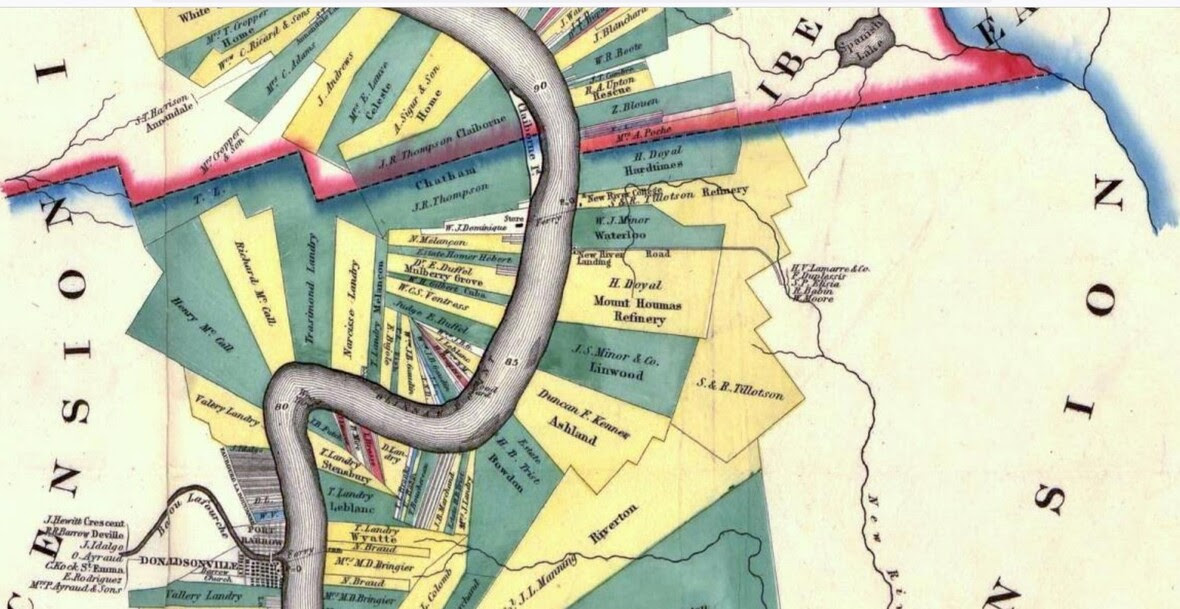
 WHEN A MAP FINALLY CALLS OUT ABOUT YOUR HERITAGE AFTER 30 YEARS
WHEN A MAP FINALLY CALLS OUT ABOUT YOUR HERITAGE AFTER 30 YEARS
Many years ago, while touring historical plantations in the greater New Orleans area, I spotted this map on display and for sale in the gift shops. I have always loved maps, and I was impressed with detail on this map, which shows the plantations that lined the lower Mississippi River in 1858. My MS ancestry was up in the NE part of the state, so it wasn’t because I thought some ancestors’ names would be on the map.
Benjamin Moore Norman – Wikipedia was an author and book dealer who originally sold the 1858 Map of the Lower Mississippi River, which includes work by the French cartographer Marie Adrien Persec Marie Adrien Persac – Wikipedia
I ordered one and got it framed so it could be displayed at work or home. For 30 years, it has hung in my office. During long, tedious conference calls, I often used it as a distraction to look and note the owner’s names on the map with their pie-slice triangles all pointed to the Mississippi Riverfront and stretching outward. Heritage.
While documenting my wife’s 7th Great Uncle Evan Jones’ heritage, I added his son-in-law, Henry Mc Call, to my tree and saw a hint that was a piece of the Persec map showing his plantation (known as Evan Hall). His brother Richard’s plantation is right next door. The piece is in the top right corner of the full map. McCall’s land appears on the northwest corner of Ascension Parish, just north of Donaldsonville.
I was elated because, after 30 years, I could see a name that had a distant tie to my family’s heritage.
Evan Jones purchased the plantation in 1778 and received additional acreage from a Spanish land grant in 1787. He first raised indigo and cotton but converted the plantation to sugarcane in 1807. Evan Jones married Marie P. Verret in Ascension Parish, and the couple had seven children. Marie purchased the plantation from the estate after her husband’s death in 1813.
She sold half of the interest to her son-in-law, Henry McCall. Henry McCall married two of Evan Jones’ daughters, Celeste, and after her death a year later, he married her younger sister, Lise. It was Henry McCall who built the grand plantation house. It was given the name Evan Hall Plantation in 1860 to honor Jones’ memory (he was the American consul). After the Civil War, they added a plantation store and a school for plantation children.
Mrs. Theodore Roosevelt visited the plantation in 1908. In 1916, the property was lost to a New Orleans bank creditor. Evan Hall Mill reopened as a cooperative among local sugar farmers in 1936.
The buildings were later lost when the levee had to be widened.
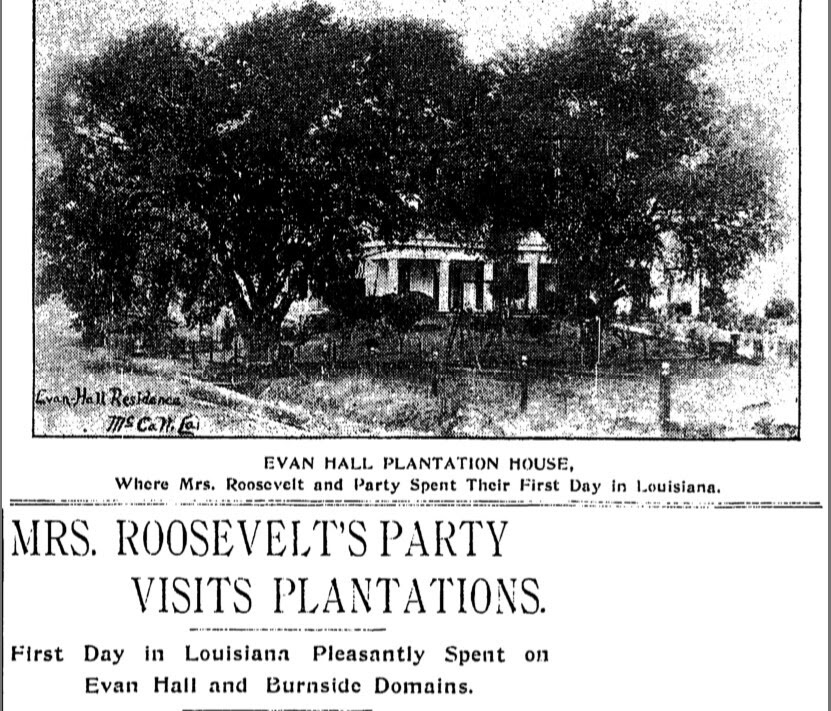
 THE DAR HONORS THE HERITAGE OF REVOLUTIONARY WAR VETERANS. MORE ARE BEING HONORED THROUGH THE USE OF DNA, AND WE ADDED A STORY ABOUT ELEANOR AND MARIAN
THE DAR HONORS THE HERITAGE OF REVOLUTIONARY WAR VETERANS. MORE ARE BEING HONORED THROUGH THE USE OF DNA, AND WE ADDED A STORY ABOUT ELEANOR AND MARIAN
Dancestors Genealogy completes the research and helps people join numerous societies, including the DAR, SAR (Sons of the American Revolution), The Mayflower Society, Colonial Dames, and state-based ancestral societies. I thought this story from Family Tree DNA was interesting as the DAR, like many institutions, was not always inclusive (see further down)
Regina Lynch-Hudson, a FamilyTreeDNA tester, has become the first woman of color under the lineage of Colonel John Carson (1752-1841) of historic Carson House to join the Daughters of the American Revolution (DAR)- more below.
In a Q&A interview with FamilyTreeDNA, she elaborates on the impact of belonging to five FamilyTreeDNA Group Projects, two of which she started, and how joining these Group Projects led to her membership in the prestigious lineage society DAR. See the link below for the rest of her story.
FamilyTreeDNA Tester Joins Daughters of the American Revolution – FamilyTreeDNA Blog
The National Society Daughters of the American Revolution (often abbreviated as DAR) is a lineage-based membership service organization for women who are directly descended from patriots of the American Revolutionary War. A non-profit group, it promotes education and patriotism. Membership is limited to direct lineal descendants of soldiers or others of the American Revolution era who aided the revolution and its subsequent war. The organization’s motto is “God, Home, and Country.”
In 1932, DAR adopted a rule excluding African American musicians from performing at the DAR Constitution Hall in response to complaints by some members against “mixed seating,” as black and white people were attracted to concerts of black artists. In 1939, they denied permission for Marian Anderson to perform a concert. First Lady Eleanor Roosevelt, a DAR member, resigned in protest.
With the aid of First Lady Eleanor Roosevelt and her husband, President Franklin D. Roosevelt, Anderson performed a critically acclaimed open-air concert on Easter Sunday, April 9, 1939, on the Lincoln Memorial steps in the capital. The event was featured in a documentary film, Marian Anderson: The Lincoln Memorial Concert. She sang before an integrated crowd of over 75,000 people and a radio audience in the millions (see picture).
At 42, contralto Marian Anderson was famous in Europe and the U.S. but had never faced such an enormous crowd. There were 75,000 people in the audience that day, and she was terrified. Later, she wrote: “I could not run away from this situation. If I had anything to offer, I would have to do so now.”
1939 NEWS CLIP- MARIAN ANDERSON LIVE AT THE LINCOLN MEMORIAL
In 1952, DAR reversed its “white performers only” policy. In 1977, Karen Batchelor Farmer from Detroit became the first known African American member of the DAR and was admitted to the Ezra Parker Chapter in Royal Oak, Michigan. Many other African American women have joined since then. Heritage.
Here’s more on the DAR: DAR

 BAD ORB STALAG IX
BAD ORB STALAG IX
One of our client’s relatives, PFC Vincent Mallette, tells of their German camp experience as a POW.
Americans and other free peoples must see to it that the Hitler youth movement is crushed if peace is to be restored to the world, Pfc. Vincent Mallette, a 30-year-old Chattanooga infantryman, liberated April 3 from a German prison, said in an interview last night. Captured while on patrol duty along the Meuse River last September, Pfc. Mallette, was imprisoned in five German camps as the enemy fled advancing Allied armies.
He declared that he was suffering from the head, which was administered headaches caused by beatings over and over by German guards in many of the camps. Relating a story of inhuman treatment over many months, Pfc. Mallette passed over the cruelties to emphasize that “thinking people do not forget that the children of Germany will goosestep to the Hitler training.”
“Even on the day we were flown to Le Havre,’ he stated, “the 11 and 12-year-old German children watched us at the airport, gave the Hitler salute, and remarked in pretty good English, ‘It’s you today and us tomorrow.'” Caned by Women: “When we were marched 75 miles to the first prison camp, the old women caned us, and others kicked us and spat on us as we went through the towns. I saw no skinny Germans; they seemed to have plenty, and many of their homes were veritable food storehouses.” Imprisoned at Durne, Prun, Gerolstin, Limberg, and Bad Ord, near Frankfurt, Pfc.
Mallette said the SS guards who captured five of the twelve men in his patrol on Sept. 6, 1944, after killing the others in action, tore up his prayer book, stomped his rosary into the ground, and declared with fury, “Now forget about your God.” The prisoners were never registered, stated, and received none of the Red Cross packages, which were opened by the Germans and doled out to the guards and other attaches of the camps. “Sometimes, they would give us a few cigarettes, perhaps about five for several scores of men. I received my first Red Cross parcel about three weeks before we were liberated by units 44th Division of the Seventh Army. I think they had read the handwriting on the wall and tried to be nice to us.”
Pfc. Mallette said the guards at Bad Ord, and Gerolstin were insane veterans of the Russian front and beat them at the slightest excuse. He added that the prisoners received one bowl of potato soup (made from unwashed potatoes) at noon, one piece of black bread in the morning, and nothing at night. “We slept on the floor in buildings with windows blasted out by bomb concussions. We huddled together to keep warm since they gave us only one blanket. I never saw a fire while I was in prison.’ Pfc. Mallette said the prisoners attended church every Sunday, with all denominations represented in respective services headed by the chaplains. Discussing the attitude of the German people regarding other nationalities, he asserted that they held, almost to a man, the “supermen” idea. Many of the officers and the people of the villages pushed the Americans around, then dusted off their hands, he stated. Heritage.
2.7 BILLION CIGARETTES
The American Red Cross produced 27,000,000 parcels. Even before America entered the war in late 1941, they were supplying parcels to British, Belgian, French, Polish, Yugoslav, Dutch, Greek, Norwegian, and Soviet prisoners of war through Geneva. The Philadelphia center alone was producing 100,000 parcels a month in 1942.
A list of the contents of a typical Red Cross parcel received by an American airman held prisoner in Stalag Luft I near Barth, Germany on the Baltic Sea:
One pound (450 g) can of powdered milk, one package of ten assorted cookies, one pound (450 g) can of oleo margarine,
eight-ounce (230 g) package of cube sugar,
eight-ounce (230 g) package of Kraft cheese,
six-ounce (170 g) package of K-ration biscuits, a four-ounce (110 g) can of coffee, two D-ration chocolate bars, a six-ounce (170 g) can of jam or peanut butter, a twelve-ounce (340 g) can of salmon or tuna, one pound (450 g) can of Spam or corned beef, one pound (450 g) can of liver paté, one pound (450 g) package of raisins or prunes, five packages of cigarettes
Seven vitamin C tablets, two bars of soap, twelve ounces (340 g) of C-ration vegetable soup concentrate.
According to one airman, recipients of these parcels were permitted to keep only the cigarettes and chocolate bars; the remainder of the parcel was turned over to the camp cook, who combined them with the contents of other parcels and German POW rations (usually bread, barley, potatoes, cabbage, and horse meat) to create daily meals for the prisoners.
Cigarettes in the parcels became the preferred medium of exchange within the camp, with each cigarette valued at 27 cents within Stalag Luft I. Similar practices were followed in other POW camps, as well. Cigarettes were also used to bribe German guards to provide the prisoners with outside items that would otherwise have been unavailable to them. Tins of coffee, which were hard to come by in Germany late in the war, served this exact purpose in many camps. Contents of these packages were sometimes stolen by German guards or other camp personnel, especially toward the end of the war.
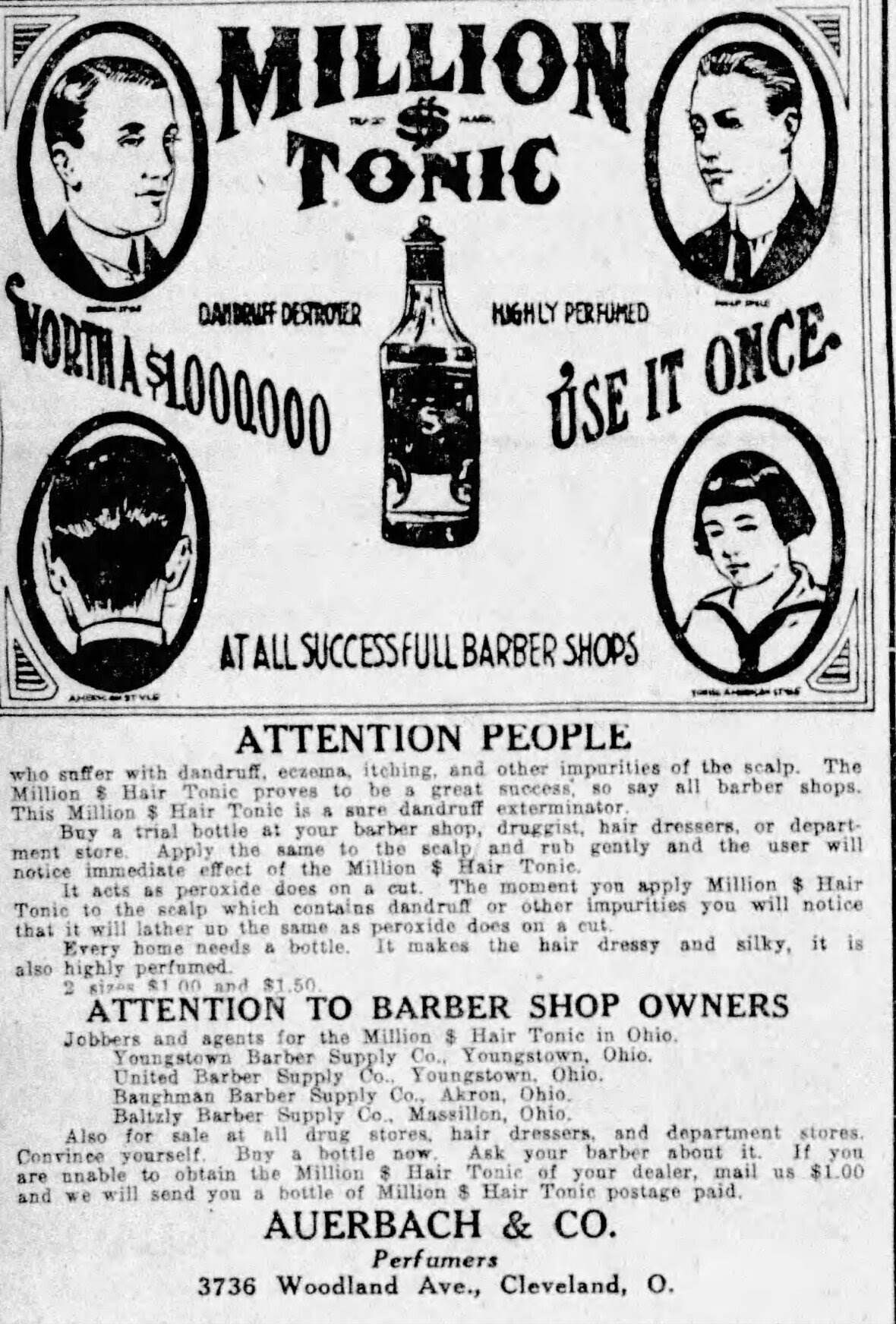
 MILLION DOLLAR HAIR OIL BRINGS IN A MILLION DOLLARS
MILLION DOLLAR HAIR OIL BRINGS IN A MILLION DOLLARS
My brother-in-law’s late wife’s uncles, brothers, Louis and Abraham Auerbach, left some rough heritage. They were born in Romania. They came to Cleveland, OH, where they started as barbers, eventually owned a chain of barber shops, and started a barber’s supply and drug stores.
During the early 1920s, one of the company’s hot-selling products was the Million Dollar Hair Tonic Restorer. The main reason was that the secret recipe was industrial alcohol, which was illegal to sell during prohibition.
From a news article: The Million Dollar Hair Tonic Restorer gang of bootleggers attempted to divert 7 million gallons of industrial alcohol to a soap factory. They withdrew 100,000 gallons and sold them as a bootleg for $10 per gallon, so they made a million dollars with their Million Dollar Hair Tonic.
Their partners in the crime were Biaggio and Carmelo Gambino of the Gambino Crime Family. Seven million gallons was worth 35 million dollars.
It turned out they had bribed government prohibition officials in Cleveland and Columbus. Because they cooperated with the government in prosecuting the officials, they were only given three-year sentences in the Federal Pen in Atlanta starting in December 1922.
In Christmas 1923, they asked for and received a pardon from President Coolidge after serving one year. Heritage.
Forever enterprising, in 1930, with Louis’ son Joe, they were indicted for a plot to manufacture whiskey from disinfectant and toilet water.
In 1932, Abraham was convicted of a life sentence for the murder of Mrs. Rose Grossman. He had shot her husband Samuel and killed his wife by shooting her in the back as she attempted to flee, while he received a knife wound to the throat. He claimed it was self-defense.
He later killed himself by grabbing the razor from the prison barber and slitting his own throat.

 SHOT TO DEATH BY A FUTURE PRESIDENT
SHOT TO DEATH BY A FUTURE PRESIDENT
A conflict over a horse race led to future president Andrew Jackson’s duel with Charles Dickinson on May 30, 1806.
In 1805, a friend of Jackson’s deprecated how Captain Erwin had handled a bet with Jackson over a horse race. Erwin’s horse, Ploughboy, was scheduled to race Jackson’s horse, Truxton; however, Erwin’s horse had to drop out of the race. According to the pre-race agreement, if a horse could not race, a forfeit fee of $800 would be paid to the injured party, in this case, Jackson.
However, Jackson and Erwin disagreed on how this was to be paid, and a nasty quarrel ensued. Erwin’s son-in-law, Charles Dickinson, became enraged and started quarreling with Jackson’s friend, which led to Jackson becoming involved. Dickinson wrote to Jackson, calling him a “coward and an equivocator”. The affair continued, with more insults and misunderstandings, until Dickinson published a statement in the Nashville Review in May 1806, calling Jackson a “worthless scoundrel, … a poltroon and a coward”.
While the actual issue that led to the duel was a horse race between Jackson and Dickinson’s father-in-law, Joseph Erwin, Jackson confronted Dickinson over a report that he had insulted his wife, Rachel Donelson Jackson. Dickinson said if he had, he was drunk then and apologized. Jackson accepted his apology. Jackson and Erwin had scheduled their horse race in 1805. The stakes specified a winning pot of $2,000 paid by the loser, with an $800 forfeit if a horse could not run. Erwin’s horse went lame, and after a minor disagreement about the type of forfeit payment, Erwin paid.
According to the Caroline County history, the minor disagreement was related to “notes,” a form of payment: “The bet was accepted, and a list of notes made out; but when the time for running arrived, Erwin and Dickinson chose to pay the forfeit. Erwin offered sundry notes that were not due, withholding the list in Dickinson’s hands.
Jackson refused to receive them and demanded the list, claiming the right to select from the notes described. The list was produced, a selection made, and the affair satisfactorily adjusted. Afterward, a rumor reached Dickinson that General Jackson charged Erwin with creating a list of notes different from the true ones. In an interview between Jackson and Dickinson, the former denied the statement, and the latter gave his author.
Jackson instantly proposed to call him in, but Dickinson declined. Meeting with the author shortly after, Jackson had an altercation with him, which ended in blows. Here the affair ought to have ended. But some desired to produce a duel between Jackson and Dickinson…”
As told by Jackson biographer Robert V. Remini, one of Jackson’s friends, while sitting in a Nashville store, shared what was probably a more lurid story about Erwin’s disputed payment. When Dickinson heard the story, he sent a friend, Thomas Swann, to act as a go-between and inquire about what Jackson said about his father-in-law. Whether the friend misinterpreted or misrepresented what the two men said, this minor misunderstanding became controversial.
In a confrontation at Winn’s Tavern, Jackson struck Swann with his cane and called him a stupid meddler. Dickinson sent Jackson a letter calling him a coward at about the same time that Swann wrote a column in a local newspaper calling Jackson a coward. Jackson responded in the same newspaper, claiming that Swann was a “lying valet for a worthless, drunken, blackguard”, meaning Dickinson.
This was the last straw for Dickinson, who, after he returned from New Orleans in May 1806, published an attack on Jackson in the local newspaper, calling him “a poltroon and a coward”. After reading the article, Jackson sent Dickinson a letter requesting “satisfaction due me for the insults offered”.
Dueling was illegal in Tennessee. However, under the United States’ early 1800s criminal law, it was tough to be extradited across state lines. As a result, the two men met near Adairsville, Kentucky, adjacent to the Tennessee border, on May 30, 1806. Dickinson left Nashville the day before the duel with his second and a group of friends, confident, even demonstrating his shooting skills at various stops along the way. Since Dickinson was considered an expert shot, Jackson and his friend, Thomas Overton, determined it would be best to let Dickinson fire first, hoping that his quickness might spoil his aim. The apparent weakness of this tactic was that Jackson might not be alive to aim.
Jackson and Overton also devised a strategy in which, if Overton should win the coin toss to give the word “fire,” he would ask Dickinson the question, “Gentleman, are you ready?” purposefully after asking Jackson and then immediately say “Fire” to cause Dickinson to fire impulsively. Overton did indeed win the coin toss and subsequently used this strategy.
Dickinson fired first, hitting Jackson in the chest. Incredibly, Jackson not only survived, merely wounded, but aimed his pistol and returned fire. Under the dueling rules, Dickinson had to remain still as Jackson took his shot. Jackson’s pistol stopped at half cock, so he drew back the hammer and aimed again, this time hitting Dickinson in the chest. Dickinson bled to death as a result of his wound.
The expert Dickinson had aimed at Jackson’s heart, though the bullet had been slightly deflected by Jackson’s brass button on his coat, which some claim was due to him deliberately wearing loose clothing over his lean frame. It has also been suggested that Jackson adopted a careful sideways stance to ensure his heart was obstructed. The bullet broke some of Jackson’s ribs and had ended up lodged inches from his heart. While such a wound could have quickly incapacitated Jackson, an unconfirmed account later claimed that while conversing with a friend on his deathbed, he stated, “If he had shot me through the brain, sir, I should still have killed him.”
Doctors determined that the bullet lodged in Jackson’s chest was too close to his heart to operate, so Jackson carried it for the rest of his life, suffering much pain from the wound. Locals were outraged that Dickinson had to stand defenseless while Jackson re-cocked and shot him. This was a confusing application of dueling rules, as snaps were considered as good as a shot. A snap implies that the hammer fell entirely and failed to cause a shot, but a half cock is not a snap. Dickinson’s second nervously permitted Jackson to re-cock his pistol. Some might claim that Jackson could have shot into the air or shot only to injure Dickinson; this would have been considered sufficient satisfaction under dueling rules. Jackson replied that Dickinson had meant to “kill the gent,” so Jackson had also shot to kill. Jackson’s reputation suffered greatly from the duel. Heritage.
Jackson himself later told a friend, “I had no unkind feeling against Mr. Dickinson . . . My quarrel had been with his father-in-law, Col. Erwin.” Since dueling was illegal in Tennessee, the two men and their companions set out on horseback to Logan County, Kentucky, near the Red River. Afterward, Jackson admitted being “badly frightened” – “I knew Dickinson to be the best shot with the pistol I ever saw. I, therefore, went upon the ground expecting to be killed.”
Jackson himself was quoted as saying, “Under the impression that I was, perhaps, mortally wounded, and upon the impulse of the moment, I fired, and my antagonist fell.” Jackson would always feel deep remorse over the outcome: in his last years, he confessed to his old friend General William G. Harding that he regretted nothing in his life so much as this duel. That’s part of Jackson’s heritage. Heritage.
The duel between Gen. Jackson and Charles Dickinson, Esq. woodcut from one of the 1828 Coffin Handbills is pictured above.
 WHAT ABOUT YOUR DESCENDANTS KNOWING ABOUT THEIR HERITAGE?
WHAT ABOUT YOUR DESCENDANTS KNOWING ABOUT THEIR HERITAGE?
Reach out to Dancestors Genealogy. Our genealogists will research, discover, and preserve your family history. No one is getting any younger, and stories disappear from memory every year and eventually from our potential ability to find them.
Preserve your legacy and the heritage of your ancestors.
Paper gets thrown in the trash; books survive!
Ready to embark on your family history journey? Don’t hesitate. Call us at 214-914-3598, and let’s get your project started!


 IN CASE SOUTH DAKOTA NEEDS MORE MONUMENT HERITAGE
IN CASE SOUTH DAKOTA NEEDS MORE MONUMENT HERITAGE THE NFL HAS MR IRRELEVANT, WHY NOT THE PRESIDENCY?
THE NFL HAS MR IRRELEVANT, WHY NOT THE PRESIDENCY?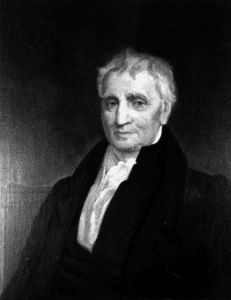 THE YELLOW ROSE OF TEXAS IS FROM WHERE?
THE YELLOW ROSE OF TEXAS IS FROM WHERE?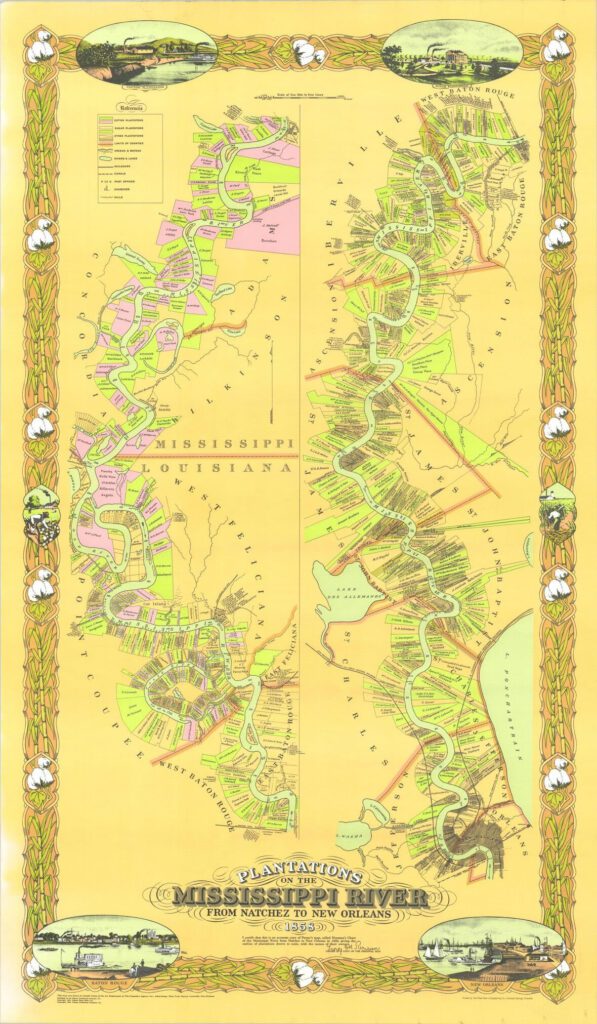 WHEN A MAP FINALLY CALLS OUT ABOUT YOUR HERITAGE AFTER 30 YEARS
WHEN A MAP FINALLY CALLS OUT ABOUT YOUR HERITAGE AFTER 30 YEARS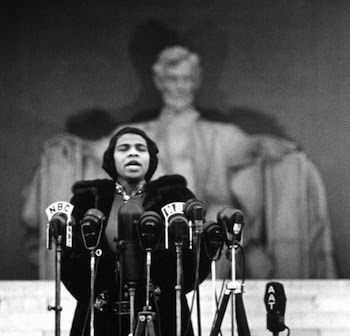 THE DAR HONORS THE HERITAGE OF REVOLUTIONARY WAR VETERANS. MORE ARE BEING HONORED THROUGH THE USE OF DNA, AND WE ADDED A STORY ABOUT ELEANOR AND MARIAN
THE DAR HONORS THE HERITAGE OF REVOLUTIONARY WAR VETERANS. MORE ARE BEING HONORED THROUGH THE USE OF DNA, AND WE ADDED A STORY ABOUT ELEANOR AND MARIAN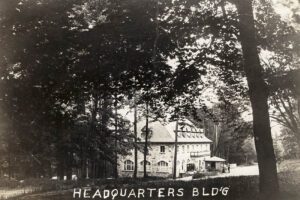 BAD ORB STALAG IX
BAD ORB STALAG IX
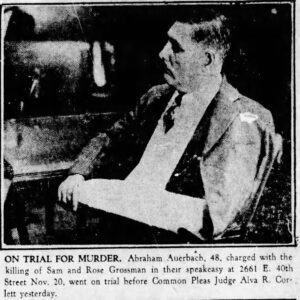 MILLION DOLLAR HAIR OIL BRINGS IN A MILLION DOLLARS
MILLION DOLLAR HAIR OIL BRINGS IN A MILLION DOLLARS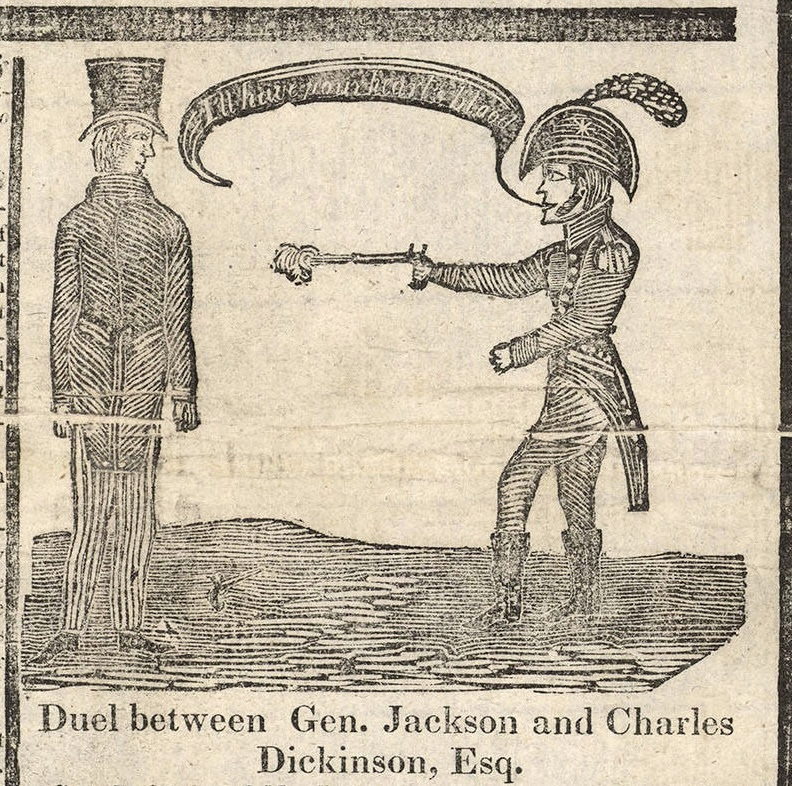 SHOT TO DEATH BY A FUTURE PRESIDENT
SHOT TO DEATH BY A FUTURE PRESIDENT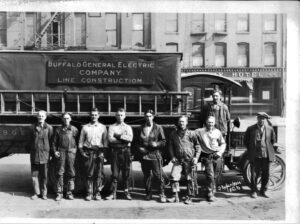 WHAT ABOUT YOUR DESCENDANTS KNOWING ABOUT THEIR HERITAGE?
WHAT ABOUT YOUR DESCENDANTS KNOWING ABOUT THEIR HERITAGE?